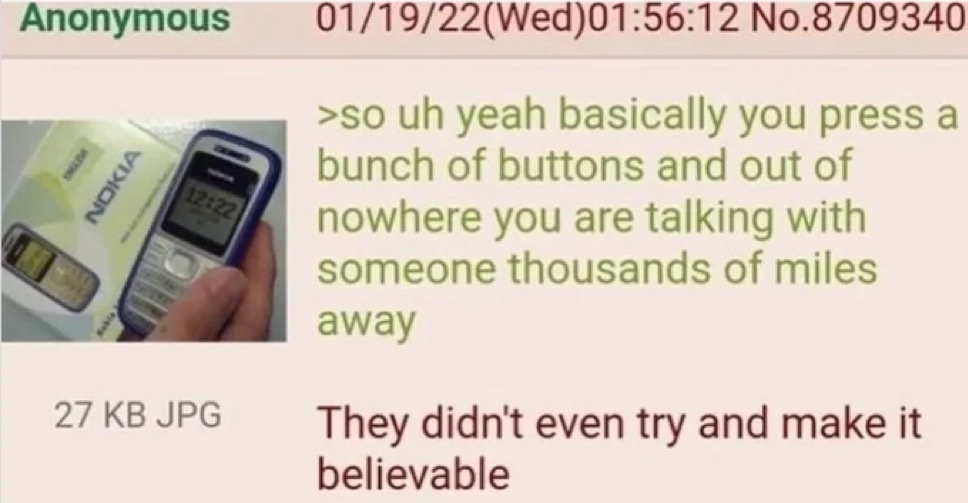this post was submitted on 31 Dec 2024
514 points (98.5% liked)
Greentext
4726 readers
3173 users here now
This is a place to share greentexts and witness the confounding life of Anon. If you're new to the Greentext community, think of it as a sort of zoo with Anon as the main attraction.
Be warned:
- Anon is often crazy.
- Anon is often depressed.
- Anon frequently shares thoughts that are immature, offensive, or incomprehensible.
If you find yourself getting angry (or god forbid, agreeing) with something Anon has said, you might be doing it wrong.
founded 1 year ago
MODERATORS
you are viewing a single comment's thread
view the rest of the comments
view the rest of the comments

Speed of light in glass is about 2/3c. Internet routing does not follow great circle routes either, so add an extra 20% fudge factor for that.
From experience, voice calls sometimes get extra latency added in for no good reason whatsoever. Calling again usually resolves the issue.
So while there's a bit more delay, despite being noticeable it doesn't change how you talk on the phone.
WHAT?? NO, NO, I'M IN THE LIBRARY! THE LIBRARY!! OK, CIAO!
Don't forget the velocity factor of regular copper wire is somewhere on the order of 95%.
And if it's coaxial copper, then it's closer to 80%, and in some cases as bad as 50%.
Science is weird.
Long distance calls are sometimes routed over geostationary satellites. These signals travel for 2x40,000km which leads to a very noticeable delay of ¼ of a second, the answer will reach you ½ a second later than usualy, which feels very odd.
At least that was the case in the 1990s, when I used the POTS to call long distance. Nowadays I'd assume most of that is routed over the Internet, which uses undersea cables and thus is usually much faster than that.